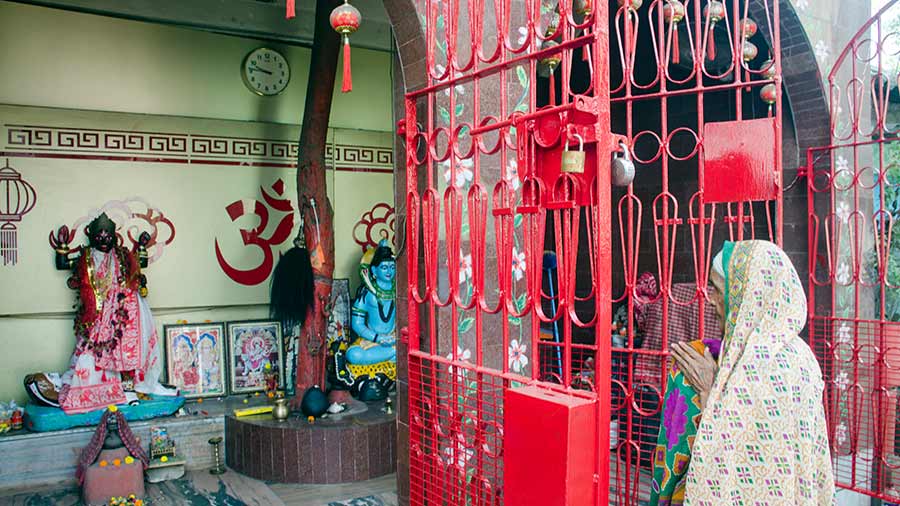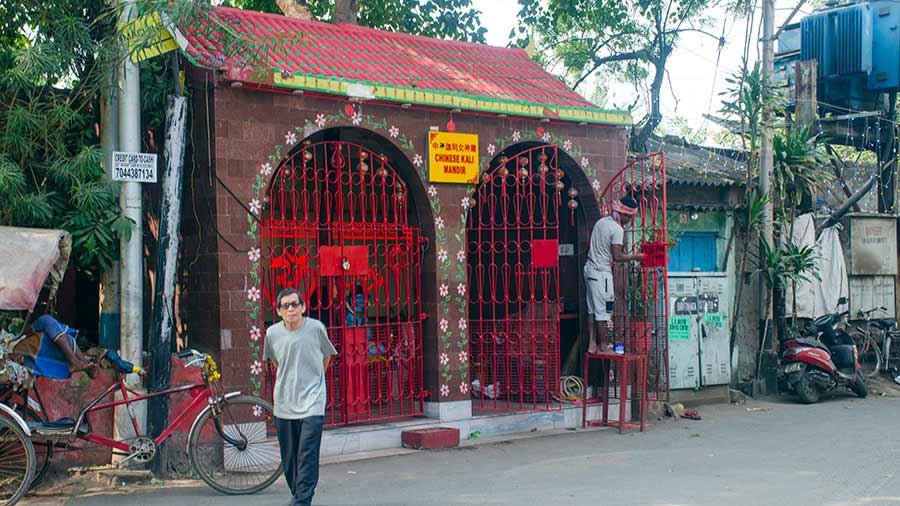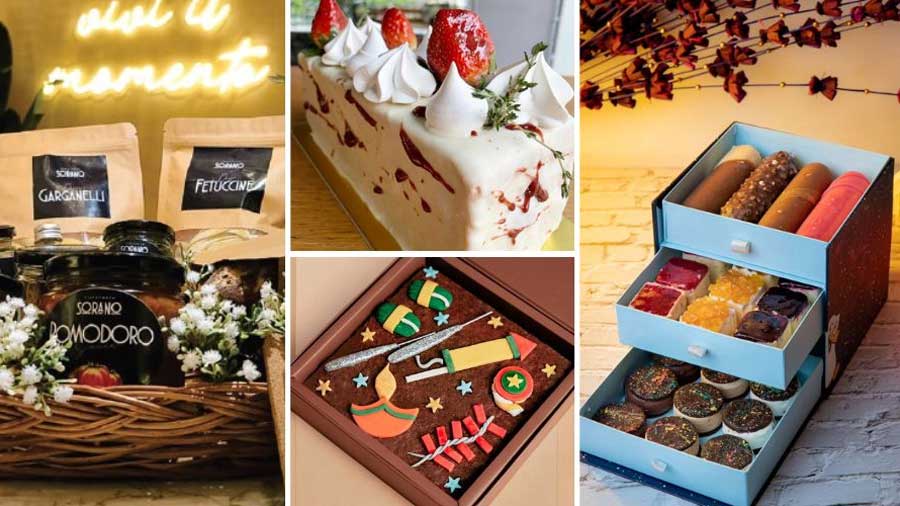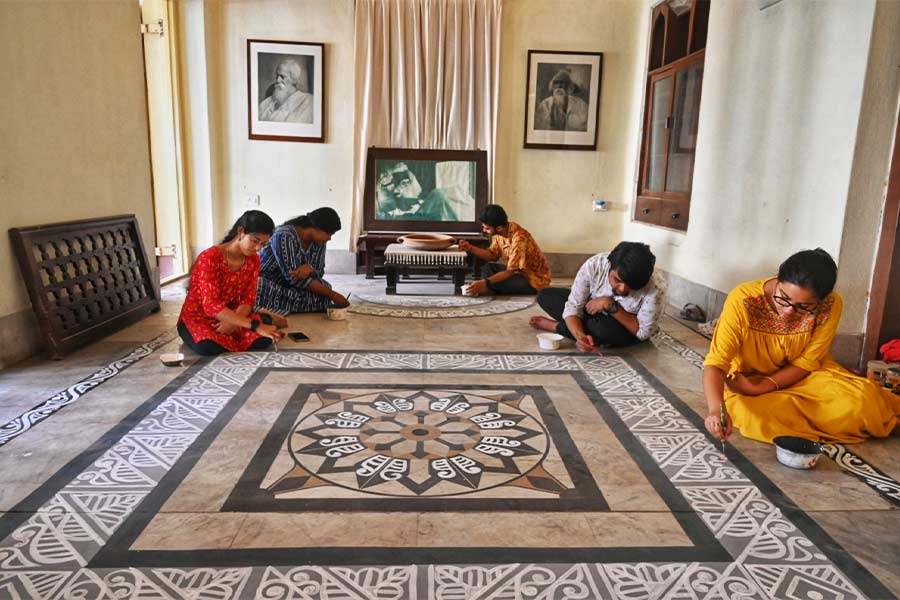At first glance, it may look like just an ordinary roadside shrine surrounded by a tree. It houses several idols and framed photos of Hindu gods and goddesses but a closer inspection will show a few unusual diversions.
The ceiling contains a painting of an eagle and dragon done in Chinese style. The backdrop of the idol contains a glow sign with Chinese motifs along with the om symbol. Also, outside the temple, between the arches is a bi-lingual (Chinese and English) board saying ‘Chinese Kali Temple’. This is Kolkata’s only Chinese Temple housed in Tangra, the new China Town of Kolkata.
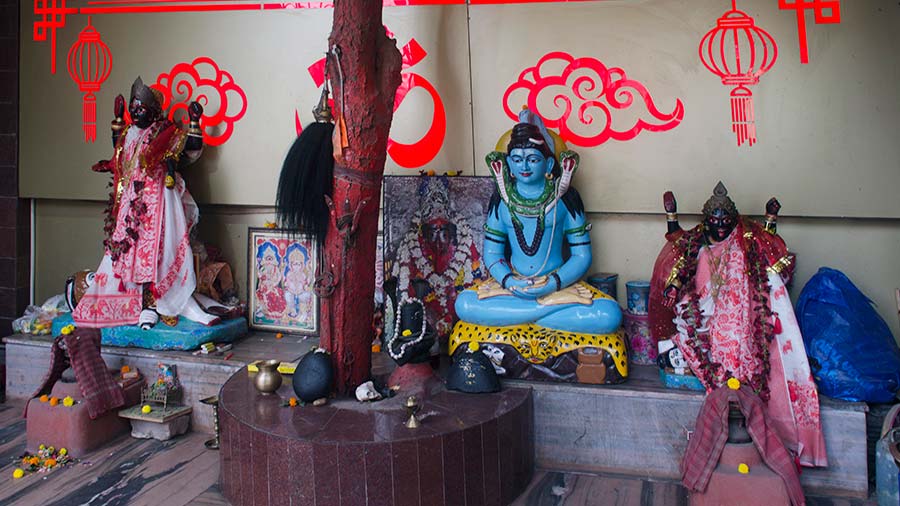
Inside the Chinese Kali Temple of Tangra
The Chinese settlement in Kolkata dates back to almost two-and-a-half centuries and is credited to Tong Achew. He settled near Budge Budge in the late 18th century and the locality bears his name and is known as Achipur. Later, the Chinese settled in the central part of Kolkata and established the city’s first China Town in Territy Bazar region of central Kolkata. Subsequently, they moved to Tangra on the eastern fringes of the city and came up with their tanneries and eateries. Tangra soon turned out to be the second China Town of the city.
The Chinese Kali Mandir in Tangra doesn’t have a long history and also humble beginnings. According to old times, about 60 years ago, it was just a shrine beneath a tree. It comprised a black stone representing a shivling. It was worshipped by local Hindus but the local Chinese did stop to pay respect to the roadside deity.
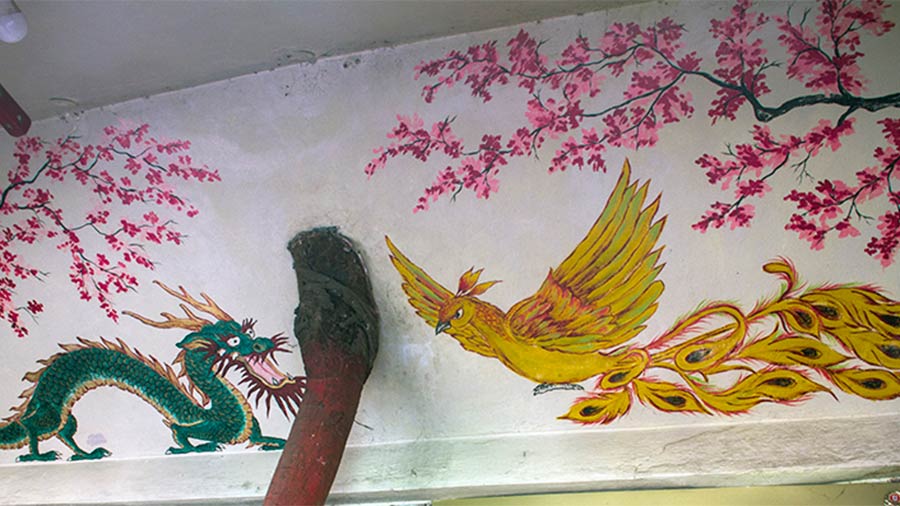
Chinese-styled frescos adorn the ceilings and their side panels of the Chinese Kali Temple roof
Chen, a third generation Kolkata Chinese, narrates the story: “With donations from the locals, which included the Kolkata Chinese, the shrine grew over time and about 30 years back it got a permanent structure.” He adds: “The temple acts as a cross-cultural connection with the locals worshipping Ma Kali, it also happens to be a centre of attraction during the Chinese New Year with the local Chinese offering pujas.”
Today, the structure consists of a two-arched granite face and is still centred round the old tree with the black stone at its base. The shrine is looked after by Sanjay Prasad (Pappu), owner of a Chinese restaurant, located bang behind the temple. Pappu said: “Pujas are offered daily at 9.30am and 7pm every day. Bhog is offered on selected days normally the day after the new moon.”
Priest Arnab Mukherjee said: “The puja follows strict Vedic rules and since the temple houses a Narayan shila, the bhog is totally vegetarian.” The local Chinese are frequent worshippers at the temple and they light long thick incense sticks.
Mukherjee took charge of the temple last year following the footsteps of his father Basudev Goswami. He further says: “For the last three years — 2020-22 — an idol of Kali was brought in the temple for worship, but this year they have stopped the practice and will be worshipping the two in house idols.”
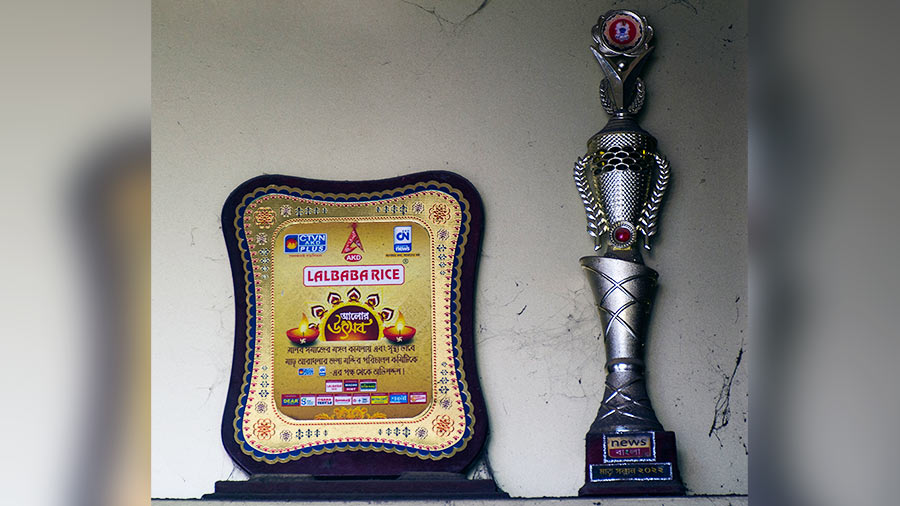
Prizes won during the 2022 Kali Puja
Last year, the Chinese Kali Mandir bagged two awards and the trophies, which are proudly displayed inside the temple.
The Chinese Kali Mandir is truly a melting pot. Tapan Kumar Roy, who runs a foreign liquor shop next to Kali temple, narrates many an unknown tale. He opened the shop in 1976 and is presently run by his daughter and son-in-law but he keeps coming back to the roadside tea stall located next to his shop.
Roy narrates: “In the good old days, Kali Puja was a great time for business and was only second behind the Chinese New Year. Business was good and crates of beer flew off the racks in seconds.” He further adds: “The shifting of the tanneries from Tangra has killed the area and the demography is changing with the real-estate development.” But there are definitely things to cheer about. Pappu says: “This year, we will be having two dhakis and they will add to the celebration with the mechanised drums of the temple.”
So, on the evening of 12 November (around 10pm), do visit the Chinese Kali Temple of Tangra to witness an unusual Kali Puja. An amazing cross-cultural event celebrating the unique diversity of the City of Joy, which has always been termed as a melting pot of humanity.
